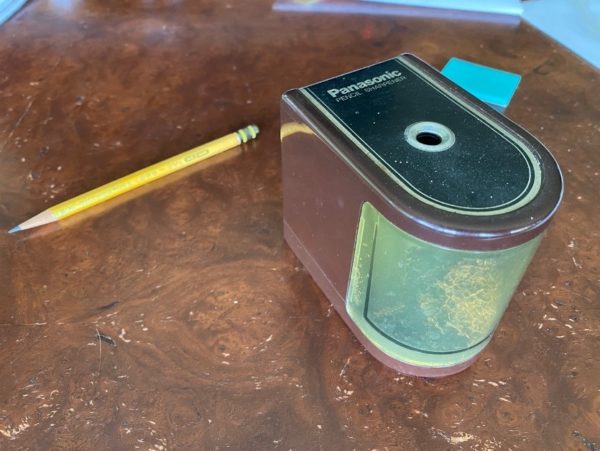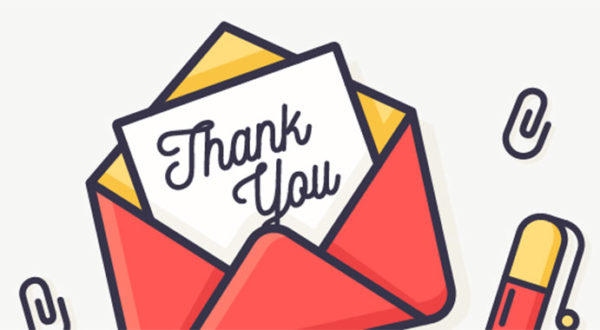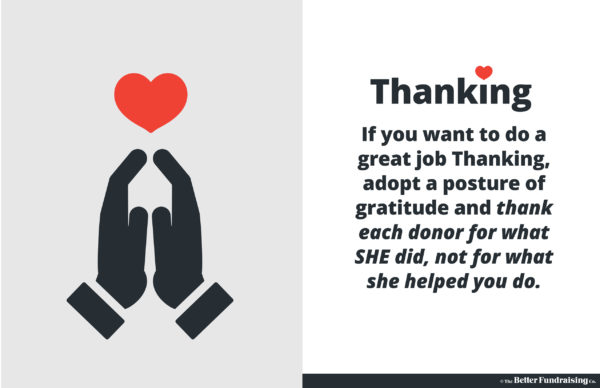Today I want to share an example of an unfortunate Thanking experience that happened to me.
It’s from a small, under-staffed organization. I’m not throwing rocks here – I love the organization, we’ll donate again, and I know full well the challenges of doing all this stuff well at a small shop.
But it’s a real-life example of how a Thank You can get off-target in just three short paragraphs.
The Salutation
“Dear Stephen.”
Ouch. Not a great start to misspell my name (especially after spelling it correctly in my email address), but we’ve all done it.
The First Paragraph
“Your generous donation is greatly appreciated!”
That’s a great first paragraph. It starts with the word “you.” It’s short and easy to understand. The exclamation point makes it feel human, not corporate. Great stuff.
The Second Paragraph
“You are cordially invited [Organization Name]’s Giving Circle and gift a free membership to the [Organization Name]’s Health Advisor Training Program to anyone of your choosing. You can find an explanation of the giving circle here: https://organizationname.org/join-our-giving-circle/”
This is where this short Thank You email loses track of its job, its purpose. A Thank You should be about the donor and the gift they just gave, not about the organization and the donor’s next gift.
A one-sentence Thank You followed by an invitation to give more is not what I’d recommend when thanking a donor for a gift.
The Third Paragraph
“Please find attached a personal thank you from [Name], Executive Director of [Organization Name]. If you would like to receive a magnet ([Organization Name]’s logo) in the mail, please reply to this email with your physical address. Again, thank you for your support!”
As a donor, I wondered why the Executive Director didn’t send their Thank You to me directly. The subtle message to the donor in a situation like this is that “I’m not important enough to hear directly from the highest-ranking person.”
As a fundraising professional, I marveled at the email bringing up another thing for me to do. If you’re scoring at home, that’s three (join the giving circle, give a free membership to something I’ve never heard of, and get a magnet), which is two too many.
The Lessons
There’s a lot going on in this little three-paragraph Thank you. But here are three lessons you can use to make sure your Thank You’s are on target:
- I said it earlier, but it bears repeating: a Thank You should be about the donor and the gift they just gave, not about the organization and the donor’s next gift. Use your Thank You’s to make your donor feel appreciated and special. Save any overt talk of further giving until later communications.
- Keep it simple. Sharing a way a donor can get more involved is a great idea – the magnet in this email is a nice touch. But giving a donor three different things is too many. There should never be more than one.
- Save it for later. There’s a lot of great content in this email; it’s just too much for one email. Save some things for later (or your New Donor Welcome stream), and use them as reasons to contact the donor again. For instance, this organization could send me a separate email about the free membership that I can give.
If you want to go deeper, I recently shared a free template for a Thank You/Receipt letter, and an 8-minute video walking you through the template, over at Work Less Raise More.
The Thank You section of that letter is a great example of a short, powerful Thank You.
Good luck with your Thank Yous!











